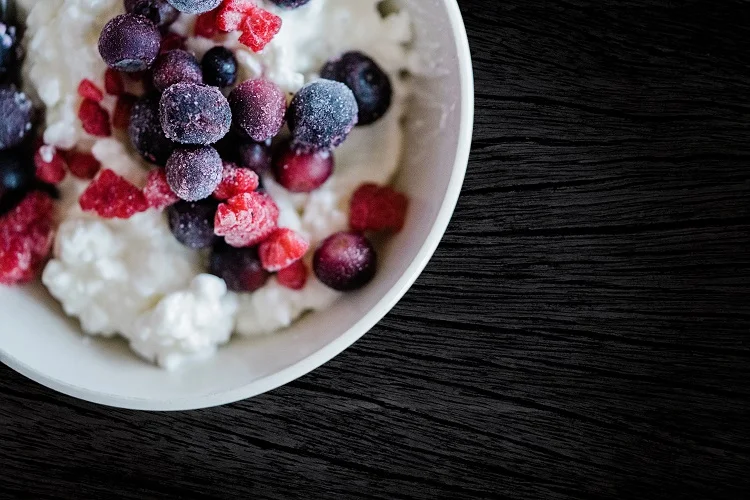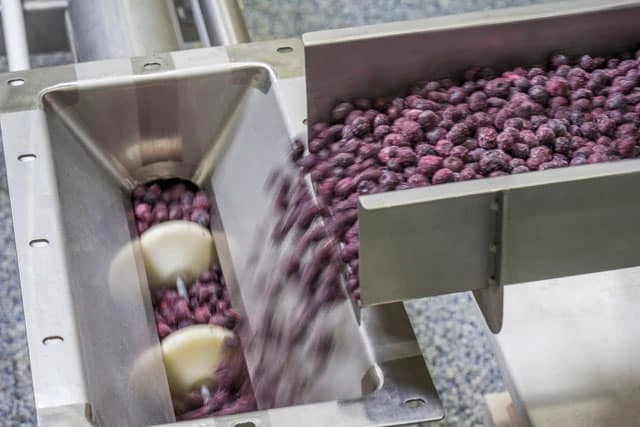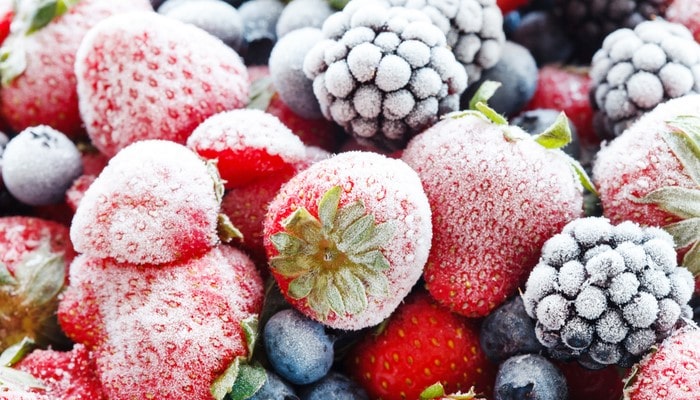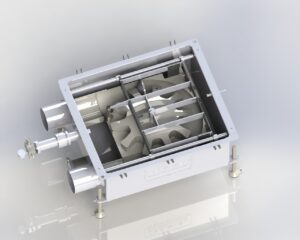There are hundreds of new frozen food items introduced onto the market every year. Some frozen foods may be gourmet, some gluten-free, while others may be less specialized. In this blog post, we will explore what are the fundamentals of freezing food, including how it was invented and what constitutes quality frozen food.
The fundamentals of freezing food involve maintaining low temperatures to slow bacterial growth, ensuring proper packaging to prevent freezer burn, and understanding the freezing compatibility of different food items to preserve taste and nutritional value.
How Was Frozen Food Invented?
Frozen food has existed for millennia in climates where food could be naturally frozen. In China, for instance, people were keeping foods preserved in ice cellars as early as 1000 BC. Freezing is an excellent and cost-effective method of preserving food. However, it was not until the 1920s that Clarence Birdseye, who is credited with inventing the quick freezing method, gave us the types of frozen foods we know today.
While he lived and worked in Labrador, NF, Canada, Birdseye realized that the fish he and the Inuit locals were catching would almost immediately freeze as they pulled them from the water. To Birdseye’s delight, he noticed that the fish remained delicious even after thawing several months later. He then theorized that if food could be frozen quickly enough, it would maintain similar levels of taste and texture as when it was fresh.
Birdseye’s Two Methods of Quickly Freezing Foods
Birdseye developed two methods of quickly freezing foods. Both methods employed an innovative way of packaging the food beforehand. In the first method, the package is held between two metal belts chilled at -40°F to -45°F with a calcium chloride solution.
The second and more common technique involves two hollow metal plates that were chilled by evaporation of ammonia to -25°F, which held the frozen foods under pressure. By using this method, it took about 30 minutes to freeze vegetables and fruits to 0°F, while freezing meat took around 90 minutes. In total, Birdseye received a whopping 168 patents related to his quick freezing method, which included everything from packaging materials and storage to transportation.
Impact of Frozen Foods: From Convenience to a Global Market Phenomenon
Since then, the technology of frozen food and methods of food freezing preservation have advanced to include even healthier options and eco-friendly packaging, allowing foods to remain fresher and more nutritious over longer periods.
There are entire aisles in grocery stores completely dedicated to frozen foods. In 2010, for instance, during the so-called Great Recession, frozen food sales grew by 3.1%. By 2028, the global frozen food market is expected to reach $385.04 billion at a compound annual growth rate (CAGR) of 5.98% between 2021 and 2028.
Freezing is among the easiest, most convenient, and least time-consuming methods of food preservation. There are, however, several types of foods that are trickier to flash freeze effectively, like produce with high water content, several cooked starchy foods (cooked rice and noodles), and some cream-based items.

What Factors Affect Food Quality?
The condition of the fresh food at the moment of freezing will determine the quality of the frozen food. In other words, frozen food’s quality cannot be any better than it was before freezing. Also, freezing does not sterilize foods as canning does. The preservation effects of freezing are limited to slowing down microorganism growth and chemical changes. Below are some of the most common factors influencing frozen food quality.
- Enzymes
All fresh produce contains enzymes that help the fruit or vegetable ripen and mature. Freezing vegetables and fruits slows but does not completely stop enzyme action. If not properly deactivated, these enzymes can affect color, flavor, texture, and nutrient loss during storage.
Freezing, heating, or introducing certain chemical compounds can control enzyme action. Freezing will slow down enzyme activity in meat and some fruits enough that little to no further treatment is needed. Other fruits and vegetables require blanching to deactivate their enzymes. The blanching process is simply a short scalding in boiling water or steam.
- Microorganisms
Freezing also stops microorganism growth that can result in food spoilage and illness. Nevertheless, the freezing process will not destroy the organisms – they will begin multiplying once the food is thawed and left at room temperature.
- Air
If improperly packaged, oxygen in the air can change frozen food flavors and colors.
- Ice Crystals
Before flash freezing, food used to be frozen slowly. As a consequence, large ice crystals had time to form inside the food. When an ice crystal punctured and ruptured the food cell membrane, all the water inside the cell would leak out during thawing, altering both the food’s flavor and texture. The speed of flash freezing prevents the formation of large ice crystals that would cause degradation.
- Fluctuating Temperatures
Maintaining a constant freezer temperature of 0 degrees Fahrenheit or below will ensure top quality. As the temperature rises, the storage life of frozen foods decreases. For example, frozen beans kept at 0°F have a shelf life of one year, beans kept at 10°F have three months, while those held at 30°F have only three weeks. Fluctuating freezing temperatures can also cause ice crystal growth and moisture evaporation.
- Moisture Evaporation
When food is improperly protected, it may lose moisture, flavor, color, and texture. Ice crystal evaporation can also happen on the surface of the food, leading to a freezer burn. This is a dry, brownish, and tough area that is safe to eat but is not desirable.
What Are Prior Food Processing and Pretreatments?
As previously mentioned, the quality level of each food item before freezing is a major factor in the overall success of the freezing process. Therefore, high-quality materials based on food standards and grades need to be maintained to get similarly high-quality frozen products. These food standards and grades involve the freshness and freezing sustainability of the product, soil nutrients for plant-based foods, dietary factors for animal-based foods, and the harvesting and slaughtering methods used.
Furthermore, after harvesting or slaughtering, these food items undergo a series of pretreatments. Techniques such as blanching help deactivate enzymes that might degrade food quality. Cooking can enhance flavor and texture while chilling prepares items for the freezing process. Incorporating antioxidants can prevent undesirable changes in taste and color, particularly in fatty foods. A custom conveyor belt system plays a significant role in ensuring these pretreatments are executed efficiently, setting the stage for the final freezing process.

Be Sure You’re Familiar With Some of the Most Important Freezing Techniques
The art of preserving food through freezing has been refined over the years, evolving into a science with various techniques tailored for different foods and purposes. As consumers demand fresher-tasting and longer-lasting frozen products, understanding these freezing methods becomes crucial.
This being said, here are some common techniques for freezing food:
- Plate freezing – In this method, the product is sandwiched between two metal plates with pressure, usually applied for adequate contact. This technique is only used for products that come in regular shapes or blocks.
- Immersion freezing – This method uses a low-temperature, brine-like solution, typically of sodium chloride, sugar solutions, alcohol solutions, or glycol and glycerol solutions, in which the product is submerged. Freezing occurs through direct heat exchange. The solutions used need to be safe for the product’s taste, color, flavor, and healthfulness.
- Air-blast freezing – Cold air is circulated at relatively high speeds around the product. To generate the most cost-effective heat transfer rate, the air velocity needs to be around 16 ft/s. Several equipment arrangements are used to accomplish this, such as fluidized bed freezing, belt freezing, spiral freezing, and tunnel freezing.
- Cryogenic freezing – This technique utilizes liquefied gasses, such as liquid nitrogen or liquid carbon dioxide, which are placed in direct contact with the product. Foods are exposed to a temperature of -76°F. Though it has a low capital cost and provides a high degree of flexibility regarding food-type compatibility, this method requires a high degree of control to achieve consistent quality.
Pay Extra Attention to Packaging, Storage, and Display
The packaging, storage, and display stages will also affect the overall frozen food quality. The loss in frozen food quality is gradual, cumulative, and irreversible. For optimum quality to be maintained, every stage of processing, packaging, storage, and display needs to be addressed. All throughout this distribution process, the product needs to be maintained at a maximum temperature of 0°F.
The packaging itself also needs to fulfill several criteria:
- Be attractive to the customer,
- Protect the product from external contamination, permeable gasses, and moisture transfer,
- Allow for rapid and efficient freezing,
- Be easy to handle,
- Be cost-effective.
It was found that heavy-duty aluminum foil laminated packages offer the best results due to their low levels of water vapor transmission, oxygen permeability, light transparency, thermal and mechanical stability, and quality of sealing.

With Cablevey’s Bulk Material Handling Equipment, You’ll Experience the Elevated Frozen Food Industry
Frozen food has experienced a big evolution since its inception, becoming an important part of many peoples’ diets. This has led to the development of new and improved methods of freezing food, as well as advances in equipment and packaging.
With the increasing demand for high-quality frozen food, there’s a parallel need for systems that ensure efficient production and transport. While a typical belt conveyor system still plays an essential role in bridging this gap, you should definitely check out the benefits you get to enjoy with Cablevey’s tubular drag cable and disc conveyor systems:
- Gentle Handling
Frozen products, especially items like fruits or individually quick-frozen pieces, are susceptible to damage. The gentle movement offered by the Cablevey Conveyors’ system reduces product breakage and maintains the quality of the frozen items.
- Hygienic Transfer
With strict food safety standards, the frozen food industry can’t compromise on hygiene. Cablevey’s enclosed system prevents contamination from external sources, ensuring that the food remains clean and safe for consumption.
- Energy Efficiency
Traditional conveyor systems might require defrosting mechanisms to prevent frozen items from sticking. The design of pneumatic conveyors, however, can mitigate such requirements, thus saving energy and reducing operational costs.
- Versatility
Whether it’s transporting frozen peas, chunks of meat, or delicate pastries, the Cablevey system can be adjusted to cater to different products’ specific needs.
- Space-saving Design
With a compact design, these systems can be integrated into existing production facilities without needing extensive modifications.
- Low Maintenance
Fewer moving parts equate to reduced wear and tear, leading to longer operational life and reduced downtime.
Explore What Are the Fundamentals of Freezing Food and Let Cablevey Conveyors Lead the Way
Cablevey’s frozen food conveyor systems are suitable for moving all sorts of food batch ingredients and finished products in a gentle and sanitary manner. Our industrial conveyor belt for a warehouse can be engineered to service any part of the production process, from mixing, pretreatment, freezing, and packaging. We’re especially proud of our modular cable and tube conveyor systems, which can be used in a wide range of applications. Contact us if you would like to know more about our systems and how they can be of assistance in your operation.






